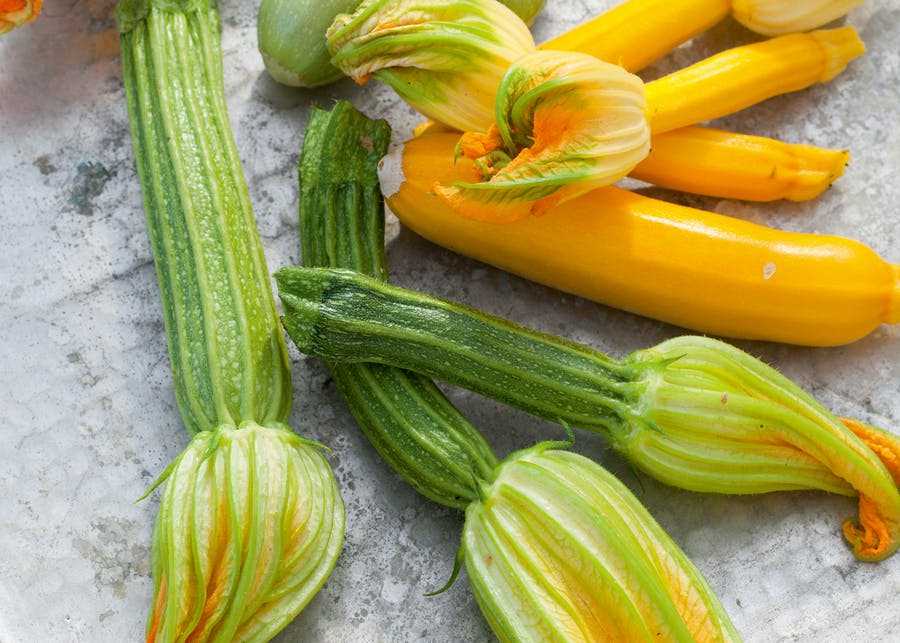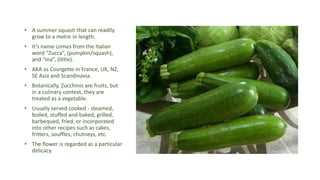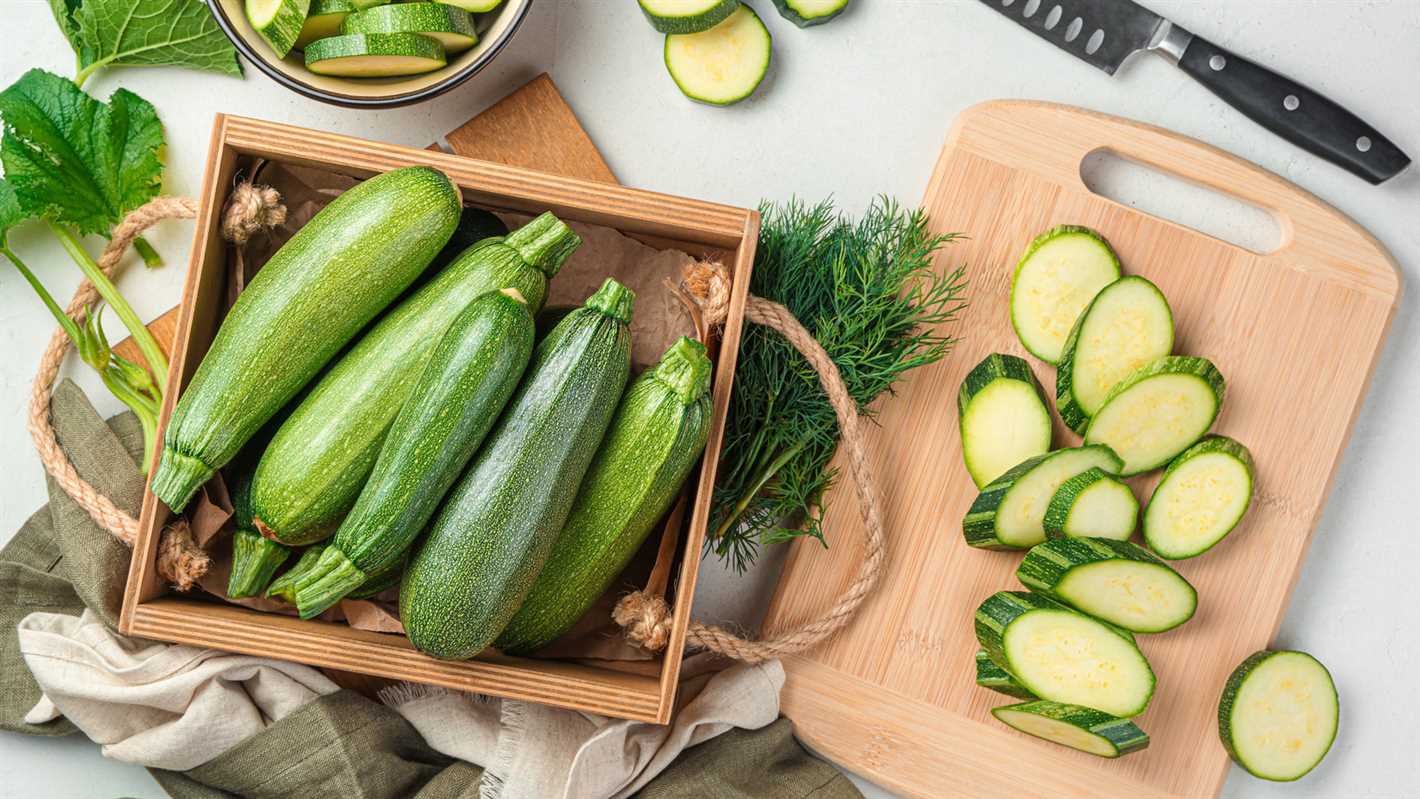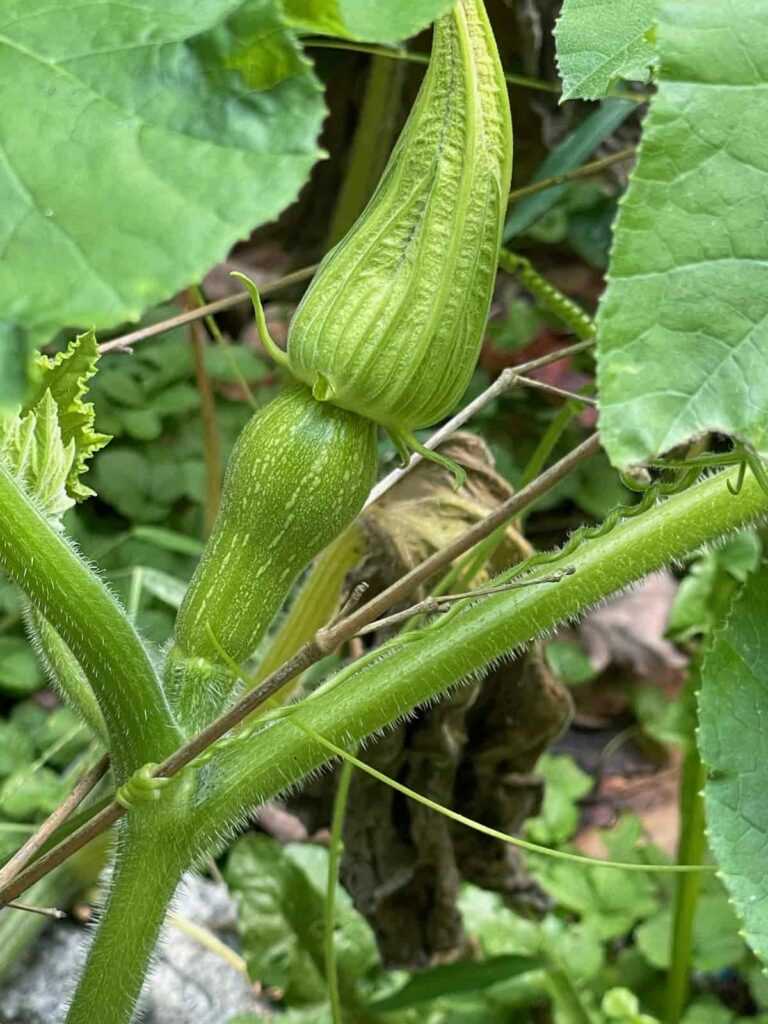- Cultivating Winter Courgettes
- Choosing the Right Variety
- Preparing the Soil
- Planting and Care
- Harvesting
- Potential Challenges
- Benefits and Challenges of Winter Courgette Cultivation
- Benefits
- Challenges
- Choosing the Right Courgette Variety
- Growing Space
- Growing Season
- Taste and Texture
- Disease Resistance
- Harvest Time
- Availability
- Preparing the Soil for Winter Courgettes
- 1. Clear the Area
- 2. Test the Soil
- 3. Improve the Soil Structure
- 4. Add Fertilizer
- 5. Prepare Raised Beds
- 6. Mulch the Soil
- 7. Water the Plants
- Planting and Caring for Winter Courgettes
- Choosing a Variety
- Preparing the Soil
- Sowing the Seeds
- Transplanting Seedlings
- Watering and Feeding
- Protecting from Cold Weather
- Harvesting
- Managing Pests and Diseases in Winter Courgette Cultivation
- Pests
- Diseases
- Harvesting and Storing Winter Courgettes
- When to Harvest
- How to Harvest
- Storing Winter Courgettes
- Using Stored Winter Courgettes
- Evaluating the Results of Winter Courgette Cultivation
- Growth and Yield
- Quality of Produce
- Plant Health
- Environmental Factors
- Overall Observations and Recommendations
- “Question-Answer”
- What are the benefits of growing courgettes in winter?
- What is the ideal temperature for growing winter courgettes?
- What is the recommended method for growing winter courgettes on the window?
- How long does it take for winter courgettes to grow and produce fruit?
- What are some common challenges faced during the cultivation of winter courgettes on the window?
- “Video” COMPANION PLANTING, INTERCROPPING, & INTERPLANTING – Maximizing Space In The Market Garden
Growing vegetables during the winter months is a difficult task for any gardener. However, with the right techniques and a bit of determination, it is possible to successfully cultivate winter courgettes. In this article, we will evaluate the results of growing courgettes on the window during the winter season.
Winter courgettes are a great choice for window cultivation because they are a versatile vegetable that can be used in a variety of recipes. They are also rich in nutrients, making them a healthy addition to any meal. By growing them on the window, you can enjoy fresh courgettes all season long.
One of the key factors in successfully growing courgettes on the window during winter is ensuring they receive enough light. Windowsills are typically not the ideal location for plants, as they may not receive direct sunlight for the required number of hours. To overcome this challenge, it is important to place the courgette plants in a south-facing window or use grow lights to supplement the natural light.
Another important aspect to consider when cultivating winter courgettes on the window is temperature. Courgettes thrive in warm temperatures, so it is crucial to keep the room they are located in at a consistent temperature of around 70°F (21°C). This can be achieved by using a space heater or ensuring that the window is properly insulated.
In conclusion, growing winter courgettes on the window can be a rewarding experience if done correctly. By providing the plants with sufficient light and maintaining a warm temperature, you can enjoy a bountiful harvest of fresh courgettes throughout the winter season. So, why not give it a try and add this versatile vegetable to your winter gardening endeavors?
Cultivating Winter Courgettes
Growing winter courgettes can be a rewarding experience, as it allows you to have fresh vegetables during the colder months. With the right techniques and care, you can successfully cultivate tasty winter courgettes right in your own window.
Choosing the Right Variety

When cultivating winter courgettes, it’s important to choose a variety that is suitable for colder temperatures. Look for varieties that are known for their cold hardiness and ability to withstand frost. Some popular winter courgette varieties include ‘Black Beauty,’ ‘Greyzini,’ and ‘Gold Rush’.
Preparing the Soil

Before planting, make sure to prepare the soil properly. Winter courgettes prefer well-drained soil that is rich in organic matter. Add compost or well-rotted manure to the soil to improve its fertility and drainage. It’s also a good idea to perform a soil test to check the pH level and adjust it if necessary.
Planting and Care
Plant the winter courgette seeds in pots or containers filled with the prepared soil. Place the pots in a sunny location near a window that receives at least 6 hours of direct sunlight per day. Water the plants regularly, but avoid overwatering as it can lead to root rot.
Provide support for the plants as they grow by using stakes or trellises. This will help keep the plants upright and prevent them from sprawling. Additionally, make sure to remove any weeds or other plants that may compete for nutrients and sunlight.
Harvesting
Winter courgettes typically take around 8-10 weeks to mature and be ready for harvest. You can begin harvesting the courgettes when they reach a size of about 4-6 inches in length. Use a sharp knife or pruning shears to cut the courgettes from the plant.
It’s important to harvest the courgettes regularly to encourage more fruit production. Leaving overripe or oversized courgettes on the plant can reduce its productivity. Store the harvested courgettes in a cool, dry place for up to a week.
Potential Challenges
While cultivating winter courgettes can be rewarding, there are some potential challenges to be aware of. Cold temperatures and frost can damage or kill the plants, so it’s important to protect them with covers or move them indoors if necessary.
Pests, such as aphids and slugs, can also be a problem for winter courgettes. Regularly inspect the plants for signs of pests and take appropriate measures, such as using organic pest control methods or handpicking the pests.
Overall, with the right preparation and care, cultivating winter courgettes can be a successful and enjoyable endeavor. Following these guidelines will help ensure healthy plants and a bountiful harvest of delicious winter courgettes.
Benefits and Challenges of Winter Courgette Cultivation

Benefits
- Extended growing season: Winter courgette cultivation allows for the production of fresh courgettes during the colder months of the year when they are typically not available. This extends the availability of the vegetable and allows for a continuous supply.
- Higher demand and pricing: Due to the limited availability of courgettes during the winter, there is often a higher demand for them. This can result in higher pricing and increased profitability for farmers who choose to cultivate them during this period.
- Improved crop diversity: Winter courgette cultivation adds variety to the range of vegetables available during the colder months. This can help diversify diets and provide consumers with more options for eating fresh produce throughout the year.
- Less competition: Since winter courgette cultivation is not as common as cultivating them during the summer, there is generally less competition from other farmers. This can provide an advantage to those who choose to grow courgettes during the winter.
Challenges
- Colder temperatures: Cultivating courgettes during the winter requires protection from the cold temperatures. This can involve using greenhouse structures or other measures to keep the plants warm.
- Less daylight: Winter days are shorter, which means there is less natural light available for the courgette plants. Supplemental lighting may be needed to ensure the plants receive sufficient light for growth.
- Pest and disease management: Winter courgette cultivation may require additional efforts to manage pests and diseases, as they can be more prevalent during this season. Regular monitoring and appropriate preventive measures should be taken.
- Higher energy costs: Maintaining optimal temperature and lighting conditions during the winter can result in higher energy costs for heating and lighting systems.
Choosing the Right Courgette Variety
Choosing the right courgette variety is an important step in ensuring a successful winter cultivation. With the wide range of courgette varieties available, it can be overwhelming to select the one that suits your needs. Here are some factors to consider when choosing a courgette variety:
Growing Space
The first thing to consider is the space you have available for cultivation. If you have limited space, consider dwarf or bushy varieties that are compact and take up less space. If you have a larger garden or want to grow courgettes in containers, you can opt for larger vine varieties that spread out.
Growing Season
The length of your growing season should also influence your choice of courgette variety. Some varieties have a shorter growing season and are better suited for cooler climates with a shorter summer season. Others have a longer growing season and can withstand hotter temperatures. Consider the average temperature and length of the growing season in your area when selecting a variety.
Taste and Texture
Courgettes come in various shapes, sizes, and colors, each with its own unique taste and texture. Some varieties have a sweeter taste, while others are more savory. Some have a firmer texture, while others are more tender. Consider your personal preferences and how you plan to use the courgettes in your cooking when choosing a variety.
Disease Resistance
Certain courgette varieties are bred to be more resistant to common diseases and pests. If you have had issues with diseases like powdery mildew or pests like aphids in the past, consider selecting a variety that has been bred for disease resistance. This can help ensure a healthier and more productive crop.
Harvest Time
Consider when you want to harvest your courgettes. Some varieties mature and produce fruit earlier, while others take longer. If you want an early harvest, choose an early-maturing variety. If you have a longer growing season or want to prolong your harvest, select a late-maturing variety or multiple varieties with varying maturation times.
Availability
Lastly, consider the availability of the courgette variety you are interested in. Some varieties may be more readily available in your region or at local nurseries. Checking with local growers or seed catalogs can help you determine which varieties are easily obtainable.
By considering these factors, you can choose the right courgette variety that suits your cultivation needs, preferences, and growing conditions. Ultimately, selecting the right variety will contribute to a successful and enjoyable winter courgette cultivation.
Preparing the Soil for Winter Courgettes

Before planting winter courgettes, it is important to prepare the soil properly to ensure optimal growth and productivity. Here are some steps to follow:
1. Clear the Area
Start by clearing the area where you plan to grow your winter courgettes. Remove any weeds, rocks, or other debris that may interfere with the growth of the plants.
2. Test the Soil
It is recommended to test the soil before planting to determine its pH level and nutrient content. Winter courgettes prefer a slightly acidic soil with a pH range of 6.0 to 6.8. Conducting a soil test will help you identify any deficiencies and allow you to amend the soil accordingly.
3. Improve the Soil Structure
Winter courgettes thrive in soil that is well-drained and has a good structure. To improve the soil structure, you can add organic matter such as compost or well-rotted manure. This will enhance the soil’s ability to retain moisture and nutrients, promoting healthy plant growth.
4. Add Fertilizer

Based on the results of your soil test, you may need to add fertilizer to correct any nutrient deficiencies. Choose a fertilizer that is appropriate for courgettes and apply it according to the manufacturer’s instructions. This will provide the necessary nutrients for the plants to grow and produce a bountiful harvest.
5. Prepare Raised Beds
If you are planting winter courgettes in a raised bed, make sure to properly prepare the bed. This involves removing any weeds or grass, loosening the soil, and adding compost or organic matter to enrich it.
6. Mulch the Soil
Once the soil is prepared and the winter courgettes are planted, it is beneficial to mulch around the plants. Mulching helps to conserve moisture, suppress weeds, and maintain a more even soil temperature. Organic mulches such as straw, wood chips, or leaves can be used for this purpose.
7. Water the Plants

After planting, water the winter courgette plants thoroughly to settle the soil and ensure good root establishment. Water regularly throughout the growing season, keeping the soil consistently moist but not waterlogged.
By following these steps, you can prepare the soil effectively for winter courgettes and set the stage for a successful cultivation. Remember to monitor the plants regularly, provide proper care, and enjoy a bountiful harvest of delicious winter courgettes!
Planting and Caring for Winter Courgettes
Choosing a Variety
When it comes to planting winter courgettes, it is important to choose a variety that is suitable for cold weather conditions. Look for varieties that are known to be frost-tolerant and can withstand low temperatures.
Popular winter courgette varieties include:
- Black Beauty
- Golden Zucchini
- Tromboncino
- Greyzini
Preparing the Soil
Before planting winter courgettes, it is important to prepare the soil properly. Courgettes prefer well-draining soil with a pH level between 6 and 7. Amend the soil with compost or well-rotted manure to improve its fertility and drainage.
Sowing the Seeds
Sow the winter courgette seeds indoors in early spring, around 4 to 6 weeks before the last frost date. Plant the seeds in individual pots or seed trays, about 1 inch deep. Keep the soil consistently moist and maintain a temperature of around 20-25°C (68-77°F) for optimal germination.
Transplanting Seedlings

Once the seedlings have grown to a height of around 3-4 inches, they can be transplanted into the garden. Choose a sunny location with well-drained soil. Space the plants about 2-3 feet apart to allow for proper growth and airflow.
Watering and Feeding
Water the winter courgette plants regularly, keeping the soil consistently moist but not waterlogged. Soak the soil deeply to encourage deep root growth. Additionally, fertilize the plants every 2-3 weeks with a balanced organic fertilizer to provide them with the necessary nutrients.
Protecting from Cold Weather
As the name suggests, winter courgettes are able to withstand colder temperatures than other varieties. However, it is still important to protect the plants from extreme cold snaps. Cover the plants with row covers or cloches during frosty nights to provide them with some extra insulation.
Harvesting
Winter courgettes typically take around 60-70 days from planting to harvest. Harvest the courgettes when they are around 6-8 inches long. Regular harvesting will encourage the plants to produce more fruits.
| Pests | Diseases |
|---|---|
|
|
Managing Pests and Diseases in Winter Courgette Cultivation
Winter courgette cultivation can be prone to various pests and diseases. Proper management and prevention strategies are essential to ensure a healthy and successful crop. Here are some common pests and diseases that can affect winter courgettes and some approaches to manage them:
Pests
- Aphids: Aphids are small insects that feed on the sap of plants, causing wilting and stunted growth. To manage aphids, regular monitoring of plants is important. If detected, aphids can be controlled with insecticidal soap or neem oil. Introducing natural predators like ladybugs can also help to control aphid populations.
- Slugs and Snails: Slugs and snails can cause damage by feeding on the leaves and fruits of courgette plants. To manage these pests, you can create physical barriers like copper tape around the plants. Beer traps and handpicking can also be effective methods to control slugs and snails.
- Whiteflies: Whiteflies are small, winged insects that feed on plant sap. They can cause yellowing of leaves and the spread of viral diseases. To manage whiteflies, sticky traps can be used to catch adult flies, and insecticidal sprays can be applied to control the nymphs.
Diseases
- Powdery Mildew: Powdery mildew is a fungal disease that causes a powdery white coating on the leaves of the courgette plants. To manage powdery mildew, ensure proper airflow around the plants by spacing them adequately. Fungicidal sprays can also be used to control the disease.
- Root Rot: Root rot is a disease caused by fungal pathogens that attack the roots of the plants, leading to wilting and yellowing of leaves. To manage root rot, proper soil drainage is crucial. Avoid overwatering and improve soil drainage by adding organic matter.
- Mosaic Virus: Mosaic virus is a viral disease that causes mottling and distortion of leaves. To manage mosaic virus, it is important to prevent the spread of the disease by removing and destroying infected plants. Aphid control is also important, as they can transmit the virus.
It is important to regularly inspect the courgette plants for any signs of pests or diseases. Early detection and prompt intervention can help prevent the spread of pests and diseases and ensure a healthy crop.
| Pests | Diseases |
|---|---|
|
|
|
|
|
|
Harvesting and Storing Winter Courgettes
When to Harvest
Winter courgettes can be harvested around 60-70 days after planting, depending on the variety and growing conditions. The best time to harvest is when the courgettes are still young and tender, usually when they are 6-8 inches long and have a shiny skin. Avoid letting them grow too large as they can become woody and less flavorful.
How to Harvest
To harvest winter courgettes, use a sharp knife or garden shears to cut the courgette from the plant, leaving about an inch of the stem attached. Be careful not to damage the plant or surrounding fruits. Remove any debris or dirt from the harvested courgettes and place them in a basket or crate for further processing.
Storing Winter Courgettes
Winter courgettes can be stored for a few weeks if properly handled. Here are some tips for storing them:
- Before storing, wash the courgettes thoroughly and dry them with a towel.
- Inspect the courgettes for any signs of damage or decay. Discard any affected ones as they can spoil the rest.
- Place the courgettes in a cool, dry, and well-ventilated area such as a cellar or pantry. Avoid storing them in the refrigerator as the low temperature can cause them to turn mushy.
- Arrange the courgettes in a single layer, making sure they do not touch each other. This helps prevent moisture buildup and potential rotting.
- Check the stored courgettes regularly and remove any spoiled ones promptly to prevent the spread of decay.
Using Stored Winter Courgettes
Stored winter courgettes can be used in various culinary preparations. Here are a few ideas:
- Slice them and sauté with onions and garlic for a quick and healthy side dish.
- Add them to soups, stews, or casseroles for extra flavor and texture.
- Grate them and incorporate into baked goods like bread, muffins, or cakes for added moisture and nutritional value.
- Make courgette noodles by spiralizing them and using them as a low-carb alternative to pasta.
- Pickle the courgettes to enjoy their tangy and crunchy goodness throughout the winter months.
| Harvesting | Storing |
|---|---|
| Harvest when young and tender | Wash and dry thoroughly |
| Use a sharp knife or garden shears | Inspect for damage or decay |
| Leave an inch of stem attached | Store in a cool, dry place |
| Avoid letting them grow too large | Arrange in a single layer |
| Keep the plant and surrounding fruits intact | Check regularly and remove spoiled ones |
Evaluating the Results of Winter Courgette Cultivation
Growth and Yield
The success of winter courgette cultivation can be evaluated based on the growth and yield of the plants. Measure the height and width of the plants to determine their overall growth. Additionally, count the number of courgettes harvested from each plant to assess the yield. Compare these measurements with the expected growth and yield for winter courgettes to determine the success of the cultivation.
Quality of Produce
Another important factor to consider when evaluating the results of winter courgette cultivation is the quality of the produce. Assess the size, color, and shape of the courgettes to determine if they meet the desired standards. Taste the courgettes to evaluate their flavor and texture. Additionally, check for any signs of disease or pests on the plants or produce. The quality of the produce will indicate the success of the cultivation in producing healthy and desirable winter courgettes.
Plant Health
The health of the plants is a crucial aspect of evaluating the results of winter courgette cultivation. Check for any signs of disease, pests, or nutrient deficiencies on the plants. Healthy plants will have vibrant green leaves, strong stems, and no signs of wilting or discoloration. If the plants show signs of stress or disease, it may indicate that the cultivation was not successful or that adjustments need to be made to improve plant health.
Environmental Factors
Consider the impact of environmental factors on the results of winter courgette cultivation. Evaluate the temperature, humidity, light levels, and overall climate during the cultivation period. Determine if these factors were within the optimal range for winter courgette growth. Any extreme fluctuations in temperature or adverse weather conditions may have affected the success of the cultivation. Adjustments can be made to improve the results by providing proper environmental conditions for the plants.
Overall Observations and Recommendations
Summarize the overall observations of the winter courgette cultivation and provide recommendations for improvement. Based on the evaluation of growth, yield, quality of produce, plant health, and environmental factors, determine whether the cultivation was successful or if there is room for improvement. Make recommendations such as adjusting fertilizer application, providing better pest control, or optimizing the cultivation environment for future winter courgette cultivation.
“Question-Answer”
What are the benefits of growing courgettes in winter?
Growing courgettes in winter allows for a fresh supply of vegetables even during the colder months. It also helps in utilizing the window space effectively and adds a touch of greenery indoors.
What is the ideal temperature for growing winter courgettes?
The ideal temperature for growing winter courgettes is between 15-20 degrees Celsius. The plants thrive in a cool environment, but it should not be too cold as it may hinder their growth.
What is the recommended method for growing winter courgettes on the window?
The recommended method for growing winter courgettes on the window is to sow the seeds in a pot filled with well-draining soil, place it near a window with sufficient sunlight, and water the plants regularly. It is also important to provide support for the plants to climb as they grow.
How long does it take for winter courgettes to grow and produce fruit?
Winter courgettes usually take around 8-10 weeks to grow and start producing fruit. However, the exact time may vary depending on the specific variety of courgettes and the growing conditions.
What are some common challenges faced during the cultivation of winter courgettes on the window?
Some common challenges faced during the cultivation of winter courgettes on the window include insufficient sunlight, overwatering or underwatering the plants, pests and diseases, and limited space for the plants to grow. It is important to address these challenges to ensure successful cultivation.







